How to set up Salesforce to Outlook integration
Harness the power of Salesforce when using Outlook to email customers

Interacting with clients and prospective customers through email is a huge part of sales employees’ jobs. It makes a lot of sense that the best CRM software would integrate with your business email.
Learning how to set up Salesforce to Microsoft Outlook integration will give your sales reps access to a number of features that can help them better manage their conversations. It enables employees to access information from Salesforce, like a contact’s purchase history and past conversations, right inside Outlook.
In addition, it makes logging email conversations and events from Outlook to a Salesforce contact’s record simple. The integration even works with Einstein Activity Capture to automate conversation logging from Outlook to Salesforce to save your employees time.
In this guide, we’ll explain how to set up Salesforce to Outlook integration. For more information on both products, check out our Salesforce review and our Microsoft Outlook review.
How to set up Salesforce to Outlook integration: Preparation
In order to integrate Salesforce and Outlook, you’ll need to have both Salesforce and Outlook environments already up and running. On the Salesforce side, you can use Sales Cloud, Service Cloud, or Salesforce Lightning to set up the integration. The integration is supported for all subscription levels for these products.
Importantly, setting up the Salesforce to Outlook integration requires administrative access to Salesforce. If you don’t have administrative access, you may need to work with your company’s IT department to modify user roles within Salesforce.
On the Outlook side, you’ll need to have Office 365 or Outlook 2019 running on Windows 10. Outlook 2013 and Outlook 2016 are currently supported for integration with Salesforce, but support for these older versions of Outlook will be phased out at the end of 2022. You can also integrate Salesforce with the Outlook web client. In that case, you’ll need to allow cookies from Salesforce in your browser.
Sign up for breaking news, reviews, opinion, top tech deals, and more.
Your company’s email must also be managed using a Microsoft Exchange email server. The Salesforce integration supports Exchange Online with Office 365 or GCC High—typically used by government agencies—as well as on-premises servers running Exchange 2019, 2016, or 2013.
Step 1: Enable Outlook integration in Salesforce
The first thing you need to do to connect Salesforce and Outlook is enable the integration in Salesforce. In Salesforce, navigate to the Setup menu and search for Outlook. Click on Outlook Integration and Lightning Sync, then toggle on the Outlook Integration slider.
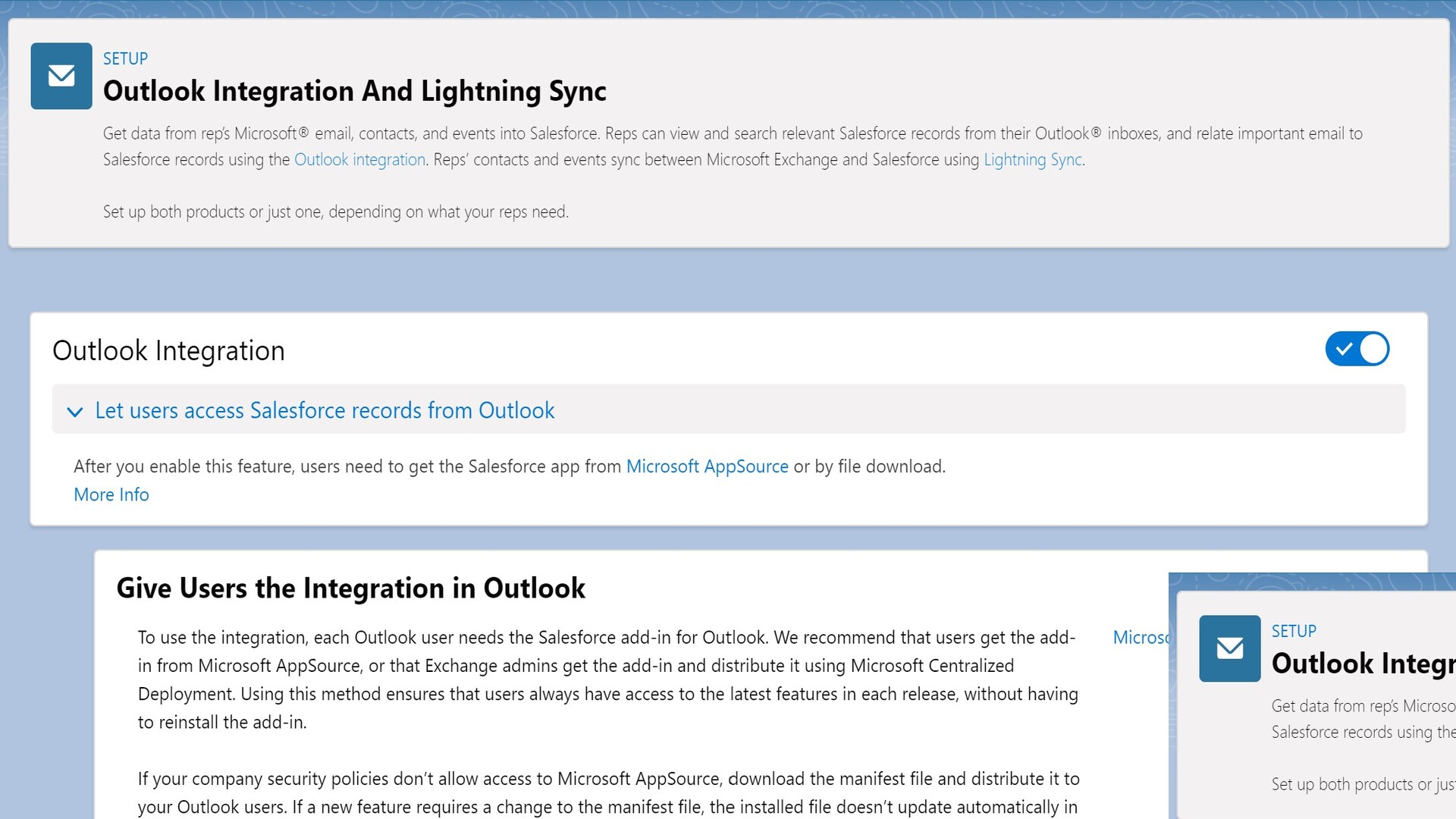
Step 2: Configure your Outlook domains
By default, Salesforce allows Outlook to connect if your Outlook environment is running on one of three standard domains:
- Outlook.com
- Office365.com
- Office.com
If your Outlook environment runs on your own domain, such as email.mycompany.com, you’ll need to whitelist that domain within Salesforce. Scroll down within the Outlook Integration and Lightning Sync until you find a section titled Microsoft Outlook Web App Domain. Click New to add a new domain, then enter your domain with the format https://email.mycompany.com.
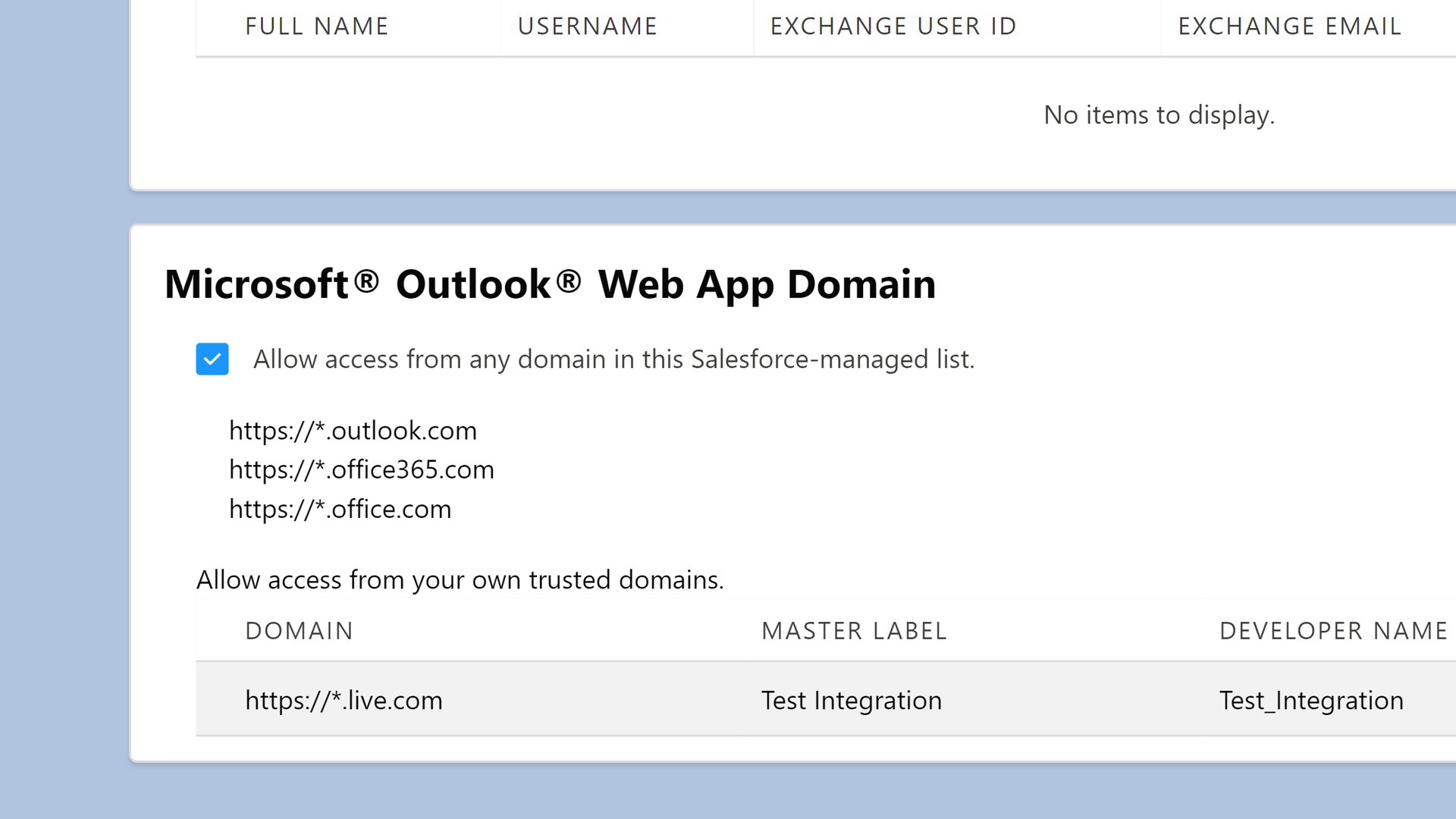
Step 3: Add the Salesforce app to Outlook
Now switch over to Outlook, where the next step is to download and install the Salesforce app from Microsoft AppSource. Open a new email message window and click the three dots to reveal an actions menu. Click Get Add-ins to open the Microsoft AppSource marketplace.

Search for Salesforce. There are several Salesforce-related apps in AppSource that may appear, but the one you want is simply called Salesforce. Click on the app and click Install to add it to your Outlook environment. The Salesforce app is completely free.
Step 4: Log into Salesforce through the Outlook app
Go back to the new email you created previously and click the three dots again. You should now see a menu item labeled Salesforce. Click on it to open the Salesforce app panel, where you’ll be prompted to log in to your Salesforce account.

Make sure Production is selected, then click Log in to Salesforce. (You can connect to a Salesforce sandbox environment, but this will not reflect your live Salesforce database.) Click Allow to open a login window and enter your Salesforce login credentials.
You will get a message confirming that you want to allow Outlook to share data with Salesforce. Click Allow to complete the integration.
Step 5: Start using the Salesforce app in Outlook
At this point, you should have an active Salesforce panel in Outlook. Using this panel, you can quickly create Salesforce contacts, tasks, and events within Outlook. You can also search for contact records in Salesforce to see their full account history and past conversations from Salesforce Chatter. Additionally, you can access your email templates from Salesforce when composing new messages in Outlook.

Step 6: Turn on Enhanced Email
Salesforce won’t yet record emails sent in Outlook to contacts’ conversation histories. For automatic email logging, you’ll need to activate the Enhanced Email feature in Salesforce.
To enable Enhanced Email, return to the Outlook Integration and Lightning Sync settings page within Salesforce. Look for the section titled Log Email Messages to Salesforce while Composing, and then click Activate and Notify Reps next to Email to Salesforce. Select Edit, check the Active box, and click Save. Then go back to the Log Email Messages to Salesforce while Composing settings and turn on the slider next to Use Enhanced Email with Outlook.
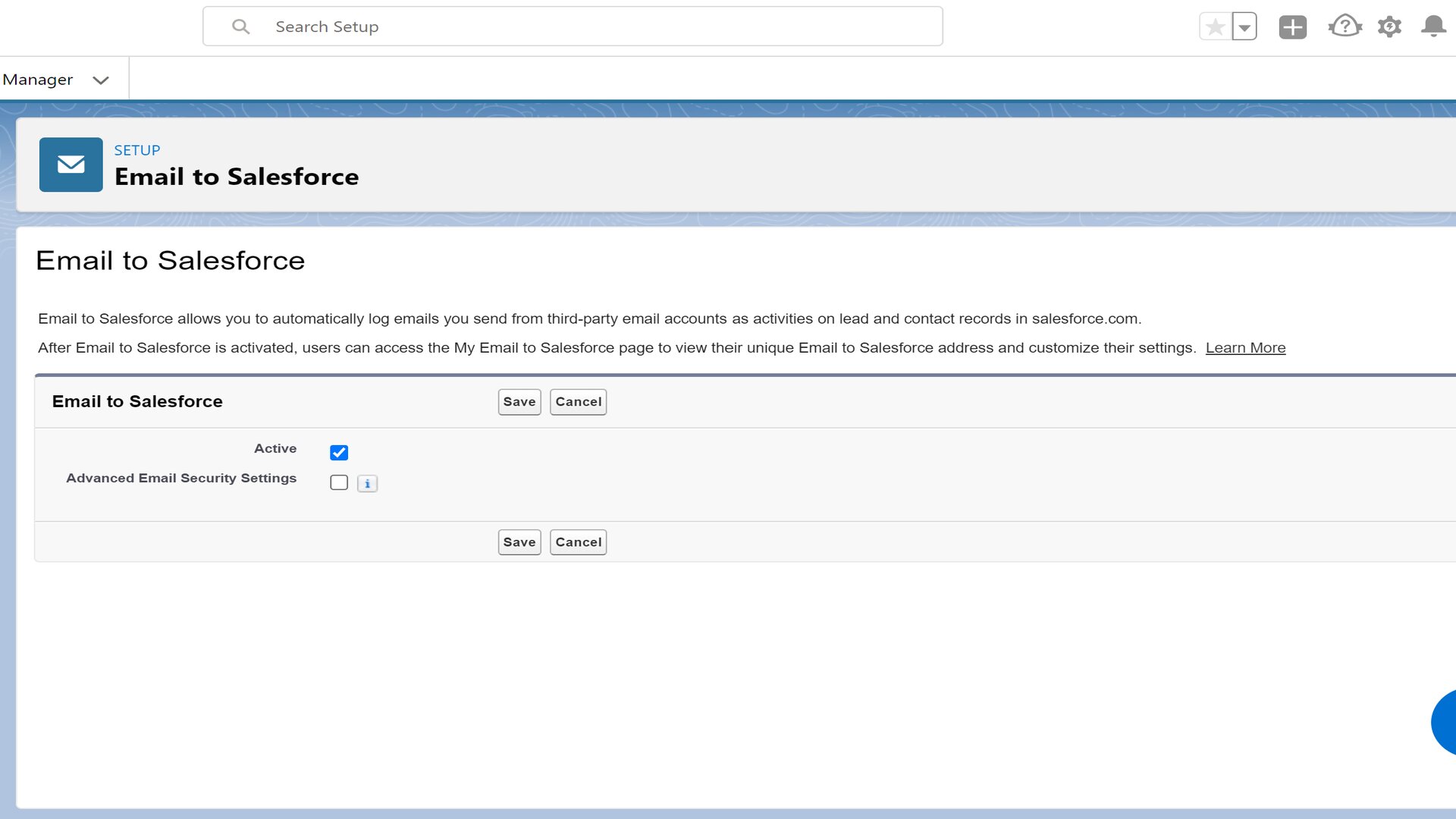
Step 7: Log an email conversation
Now, in Outlook, you can log emails to a contact’s conversation history using the Salesforce app panel. Search for a record from Salesforce and click the Log button in the top right portion of the panel. Select one or more people records to log the email to as well as the contact that the conversation is relevant to.
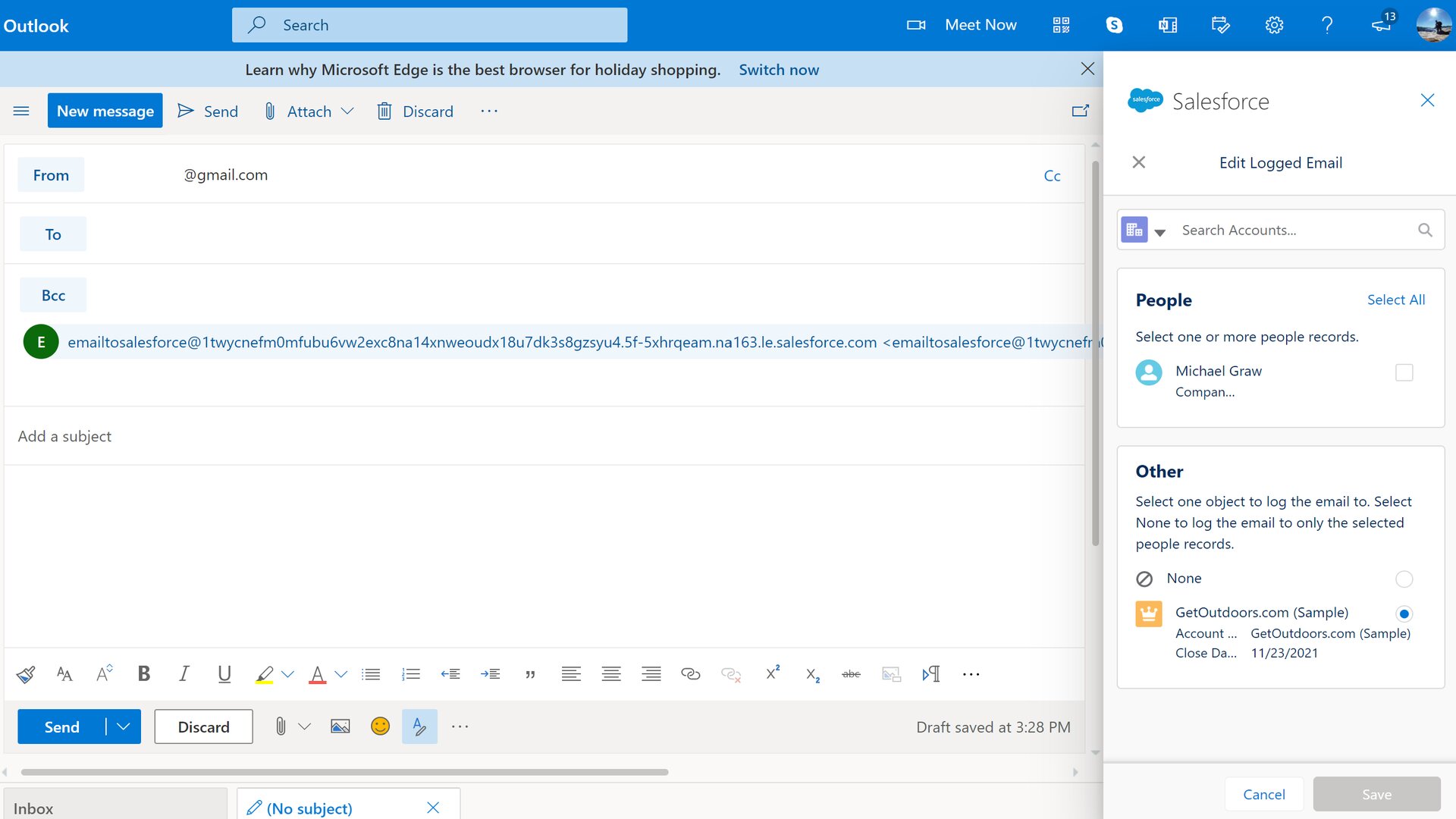
Click Save and an address will automatically be added to the BCC field of your email.
Step 8: Customize the Salesforce panel in Outlook
One of the neatest things about the Salesforce app in Outlook is that you can customize how it looks to better suit your workflow. Return to the Outlook Integration and Lightning Sync settings page in Salesforce and find the section titled Customize Content with App Builder. Make sure the slider is toggled on, then click the Create New Panel button.
This will open a drag-and-drop editor that enables you to customize the Salesforce app panel in Outlook. You can add components such as report charts, tasks, and rich text fields. You can also integrate data from Salesforce Einstein to find the predicted next best action for a lead when composing emails. The builder makes it easy to delete default components or rearrange components however you see fit.
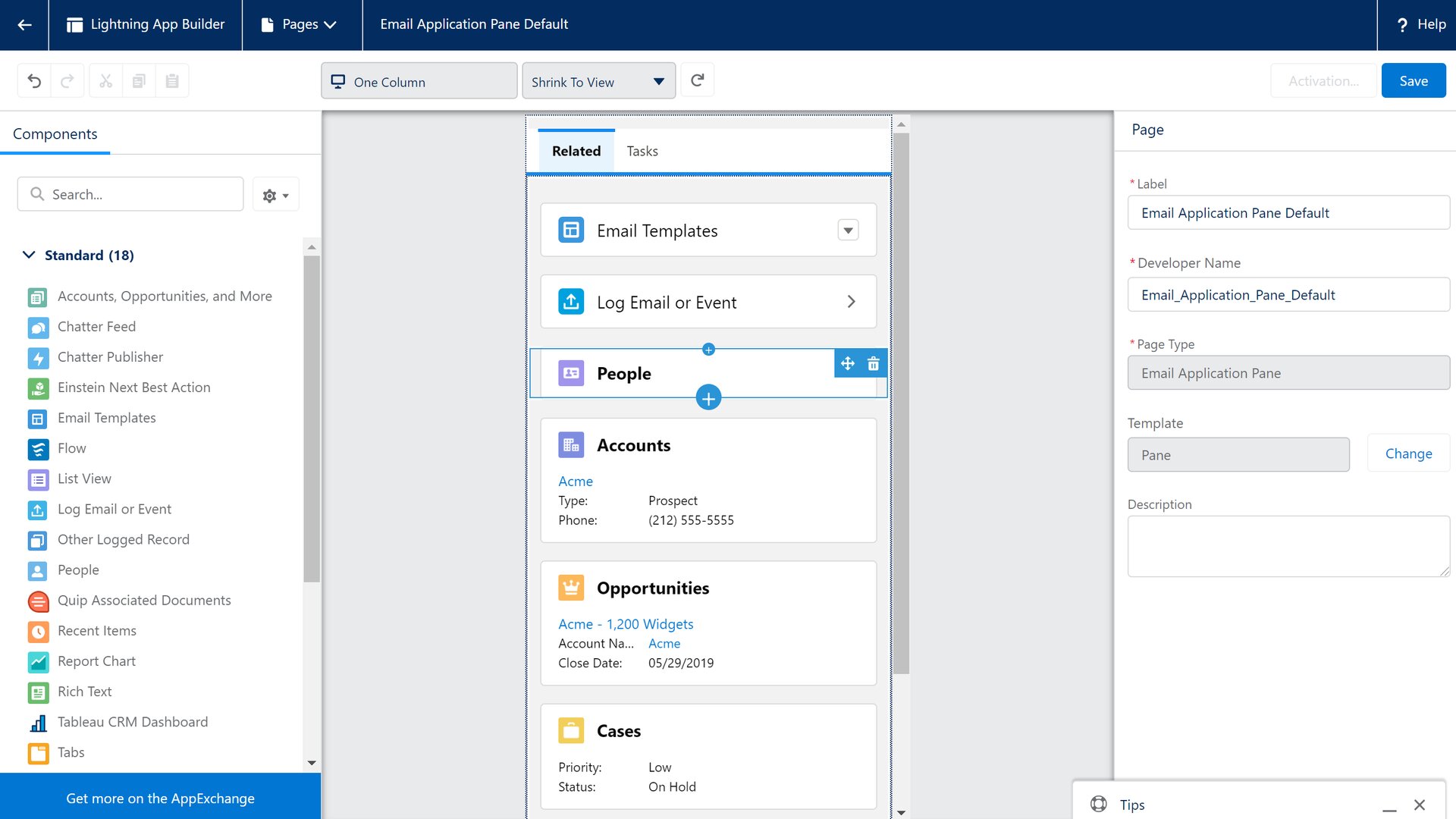
Once you’ve finished redesigning the app panel, click Save. In Outlook, close the Salesforce panel and re-open it to activate your custom panel layout.
Summary
Setting up a Salesforce to Outlook integration enables your sales team to harness the power of Salesforce when corresponding via email with leads and customers. It also makes it simple to keep track of all the communication your company has with potential customers, including the conversations that take place in Outlook.
With the free Salesforce app from Microsoft AppSource, connecting Salesforce and Outlook is fast and straightforward. You can find most of the relevant settings under the Outlook Integration and Lightning Sync settings page in Salesforce. Once the integration is complete, you can customize the Salesforce panel in Outlook using a drag-and-drop editor and turn on Enhanced Email to automate email logging to Salesforce.
If you want to learn more about Salesforce, check out our guides to Salesforce and Salesforce Lightning. We’ve also put together a Salesforce review as well as a Microsoft Outlook review and covered the best email clients for businesses.
Michael Graw is a freelance journalist and photographer based in Bellingham, Washington. His interests span a wide range from business technology to finance to creative media, with a focus on new technology and emerging trends. Michael's work has been published in TechRadar, Tom's Guide, Business Insider, Fast Company, Salon, and Harvard Business Review.
